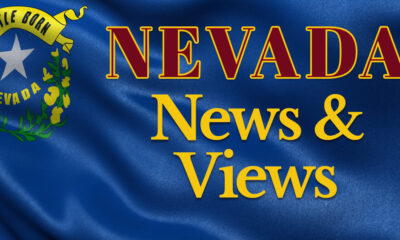 (Chantal Lovell of NPRI) – Las Vegas — A study being distributed by SEIU of Nevada — claiming that the state’s local-government employees receive less compensation than comparable private-sector workers — is fatally flawed, say authors of a major national state-by-state ranking of public employee pay.
(Chantal Lovell of NPRI) – Las Vegas — A study being distributed by SEIU of Nevada — claiming that the state’s local-government employees receive less compensation than comparable private-sector workers — is fatally flawed, say authors of a major national state-by-state ranking of public employee pay.
The SEIU-backed white paper is written by Rutgers Associate Prof. Jeffrey Keefe and argues that Nevada’s local-government employees receive lower combined salaries and fringe benefits than do comparable private-sector workers. But the Keefe study, say Andrew G. Biggs and Jason Richwine — themselves authors of a comprehensive look at public-employee compensation — “is fatally flawed.” Biggs is also the author of the Nevada Policy Research Institute’s 2001 study, “Reforming Nevada’s Public Employees Pension Plan.”
Biggs and Richwine say the important flaws in the study include:
Wage results are not replicable.
- Keefe claims that Nevada local government employees receive significantly lower wages than similar private sector workers. But we are unable to replicate Keefe’s figures. Data from the Current Population Survey show that, after controlling for education, experience and other factors that affect pay, Nevada local government employees receive comparable salaries to private sector employees. Analysis using the American Community Survey shows a public employee wage premium.
Benefits data are not specific to Nevada
- Even though he is purportedly studying Nevada, Keefe’s benefits data are actually averages for Arizona, Colorado, Idaho, Montana, Nevada, New Mexico, Utah, and Wyoming. Using regional averages is acceptable for minor benefit categories or for the private sector, where there is less cross-state variation. But large public-sector benefits such as pensions and health insurance can differ dramatically among states. For these benefits, it is necessary to use Nevada-specific data. Keefe’s regional average benefit numbers are simply not relevant to Nevada.
- And even Keefe’s regional comparison is wrong. It is well-known among researchers that the Employer Cost for Employee Compensation (ECEC) data set used by Keefe has two major drawbacks:
Pension compensation is undervalued.
- The ECEC values pension compensation based on the government’s contribution to the fund. But what states contribute in a given year has literally nothing to do with what pension benefits will be owed. The proper valuation of pension benefits comes from the risk-adjusted “normal cost” of the pension, meaning the present value of benefits accrued by workers each year, less any employee contributions.
Retiree health benefits are omitted.
- Most Nevada local employees become eligible for some form of retiree health coverage, but the ECEC data — and, hence, Keefe’s study — omit retiree health costs entirely. Governments are required to report the value of retiree health benefits accruing to current employees. For example, the City of Reno’s actuarial valuation shows that future retiree health benefits accruing to city employees in 2013 were worth an additional 11.5% of wages. By contrast, retiree health benefits in the private sector typically amount to less than 1% of wages.
For all of the above reasons, Biggs and Richwine state, the Keefe study “is not a useful analysis of local government compensation in Nevada.”
NPRI is a nonprofit, nonpartisan think tank that produces and shares ideas and information that empowers people. For more information, please visit www.NPRI.org.


Facebook
Twitter
Pinterest
RSS